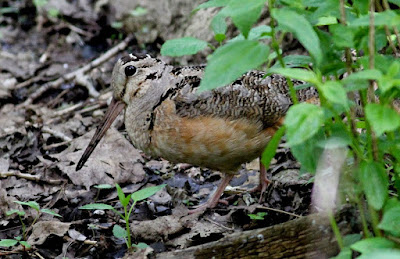I was greeted by the song of an Eastern bluebird during the
big warmup on Monday. Though that species won’t start nesting until late March
at the earliest, some local songbirds are starting to exercise their vocal
chords as the season approaches. I have noticed some other signals that other
species are sending as well.
Red-tailed hawks are paired up and can be seen in pairs
along the interstates. Several times a day they will soar together, interacting
all the while. I stopped by a likely looking habitat in Mint Hill at dusk one
evening and was glad to observe two American woodcock engaged in their unique
courtship display.
Brown-headed nuthatches have started the tedious process of
chipping out this year’s nesting cavities. They have stout bills but need very
soft, rotting pine limbs or trunks in order to be successful. Consider putting
up a box made especially for them to help them save some energy.
Pine warblers are singing during warm days now. They may
even sing on colder days if there is plenty of sunshine. I heard a Northern
mockingbird singing at 5:30 am as I stepped outside one recent morning.
Red-winged blackbirds are appearing at feeders as they start
to make their way north. Common grackles are pairing up too; breaking up the
massive flocks that are formed in winter. If you are lucky enough to have
access to a pond that hosts hooded mergansers you might catch the males doing
their courtship “dance” too.
Great blue herons are back in their established colonies or
are forming new ones at new sites. Check flooded marshes with numerous dead
trees. If you know of an old colony, check the old nests carefully; a great
horned owl may have moved in. They get the jump on all the other local species
when it comes to starting up housekeeping but not by much; a pair of bald
eagles is hanging around last year’s nest off Rea Road.
I suspect there is still some cold weather ahead of us but
even frigid temperatures will only temporarily dampen those breeding hormones
now. As February wears on it will be obvious that birds are starting to move
around more. That means new sights at
feeders. Keep your eyes on them.
 |
| Hooded Merganser by Phil Fowler |
Though they are with us mainly in the winter months, hooded mergansers begin their courtship displays on their wintering grounds.
 |
| American Woodcock by Ron Clark |
American woodcock are actively displaying now. Early nesters, I have found nests as early as mid-February.







0 comments:
Post a Comment